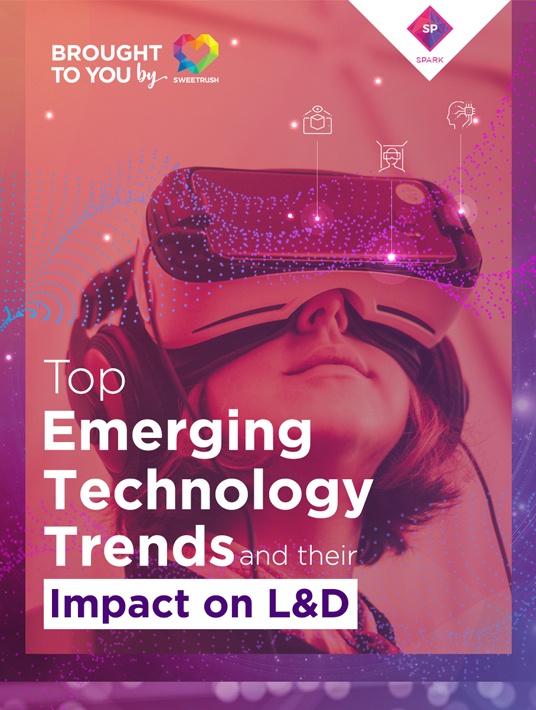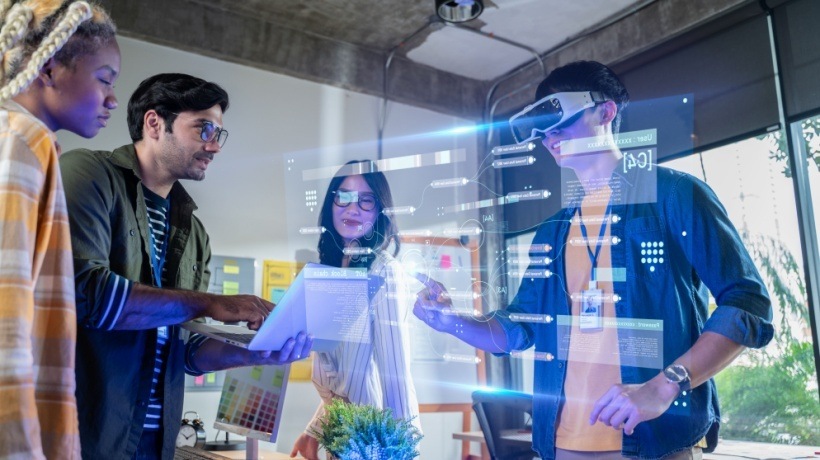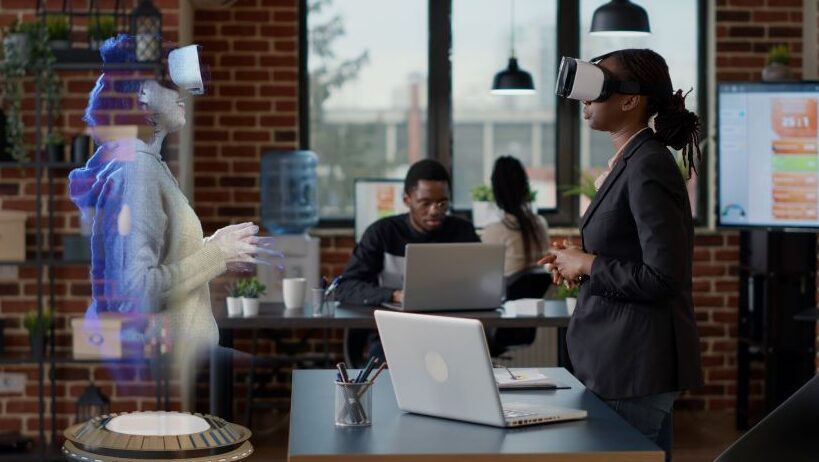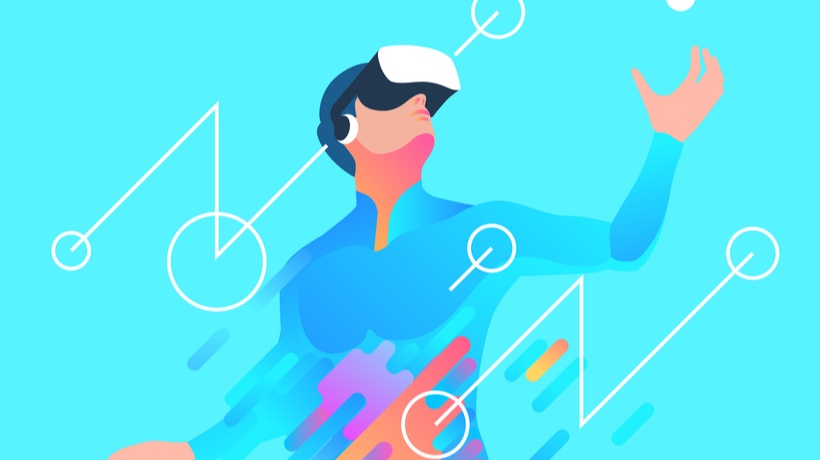Virtual Reality Training: How It Affects L&D
Virtual Reality (VR) training is taking the Learning and Development (L&D) industry by storm. Instructional Designers across the globe are in awe, delighted by the possibilities that VR offers. Each day, more and more learners get to experience strapping on a VR helmet and losing themselves in a memorable virtual environment.
Do a quick Google search of "Virtual Reality training (VR)", and you’ll find dozens of articles calling it "the future of L&D". It could be argued, however, that this description is not entirely accurate. The fact is, VR training has been a big part of L&D for quite a while, and it’s been changing the field for years.
"I think VR training is a learning modality, not the only one. It certainly is one of the most impressive I’ve ever seen, though", says Mary Gannon, Ph.D., Senior Learning Strategist at SweetRush. "I’ve never witnessed any other technology as effective and immersive as this. It may not be the future of L&D, but it’s a big part of it."
It’s true. VR training is changing the way we learn and the way we design learning, for the better. VR has been transforming learning since its inception and will likely continue to do so for years to come. VR has changed the past, is changing the present, and will change the future.

The question is, then, how is it changing it? How is VR training transforming the way we develop training and learning programs?
Here are 4 possible answers:
1. VR Immerses Learners In The Training
In "The WIRED Guide to Virtual Reality", Peter Rubin defines VR as "a technology by which computer-aided stimuli create the immersive illusion of being somewhere else". [1] That immersive illusion is, perhaps, VR’s greatest strength.
No other medium can give users the feeling of "being there" better than VR can, and that makes VR training such an exciting tool for workplace learning. No other training modality can provide the immersive experience: VR fully captures learners’ attention and, in doing so, boosts their retention of information.
"When you use VR, you only see the virtual world", Gannon says. "You don’t see emails coming in, you don’t see instant messages, you don’t hear people talking behind you. VR lessens distractions."
2. VR Teaches Skills Through Simulation
Back in 1966, professor Thomas A. Furness III developed the first visual flight simulator, which was used to train US Air Force pilots. This was the very first step into VR training.
According to Daniel Fraga and Christophe Mallet, both of the immersive tech agency Somewhere Else, "[Furness] built head-mounted displays so that trainees could experience real-world scenarios too costly or dangerous to recreate in reality. Pilots repeated key tasks and learned incident management tactics in simulated conditions". [2]
For a technology that is often seen as futuristic, 1966 seems like ancient history. But many learning elements of that primitive simulator still hold true.
"VR transports learners to a different world, and it allows people to do something that might be too dangerous, too expensive, or too difficult to repeat in real life", says Justin Mitchell, a Creative Engineer at SweetRush.
And regardless of how "dangerous" or "difficult" the VR training scenario is, learners will likely develop physical memory and retain new information through the repetition of practical skills.
"People feel like they’re really there and they’re really doing it", Gannon says, adding that the more a course mirrors a learner’s work environment, the stronger the recall that course will have.
With VR, people can receive firsthand skills training on demand and on location. In this way, VR training can reduce costs and risks for companies and learners.
3. With VR, Learners Acquire Knowledge Through Interaction
In an article published by Training Industry, W. Todd Maddox, Ph.D., says that training’s true goal is retention: "The brain is hardwired to forget. For training to be retained and guide long-term behavior, it must be stored in long-term memory." [3]
Related to this line of thinking is the Cone of Experience theory, developed by Professor Edgar Dale in 1969. Dale argued that the medium in which we learn is intricately related to how much we retain: We remember 10% of what we read and 20% of what we hear. Yet we remember 90% of what we do. [4]
As you can probably conclude, VR training has a huge advantage over other training methods. This modality allows learners to interact with a spatial representation of the information they’re receiving. Instead of just reading about an experience, learners can live that experience in a controlled environment.
"In VR, learners acquire knowledge through interaction", Gannon says. "It is as close to being in the real world, having a firsthand experience, as we can possibly do."
The numbers support this claim. Researchers in the University for Maryland performed a memory test on a group of people using VR and compared their results to those of a group that used a two-dimensional display on a personal computer. 40% of the participants who used VR scored at least 10% higher in recall ability than the participants who used the PC. [5]
4. VR Training Can Alter Behaviors And Create Empathy
There’s a song by Depeche Mode that goes: "If you try walking in my shoes, you’ll stumble in my footsteps." Back in 1993, when Martin Gore wrote it, walking in someone else’s shoes was nothing more than a metaphor. Today, things are a bit different.
Thanks to VR, we can simulate another person’s experience. You can experience what it’s like to do what that person does, or you can see how others interact with that person in any given environment.
"In the latest wave of VR training, the service industry has started training retail, customer service, and insurance staff with basic social simulations," Fraga and Mallet write. [2]
SweetRush recently partnered with Hilton to create a VR training program that allows learners to experience working in a hotel and dealing with the physical challenges and complex tasks that Hilton employees face every day.
And not only can behavior-altering VR training create empathy for service industry workers, but it also can address larger societal issues, such as discrimination and bias.
"Imagine strapping on a VR headset and suddenly not being able to hear all that well while someone interacts with you. That can give you a pretty good idea of what it’s like every day for people with hearing disabilities", Gannon says. "Imagine a simulation in which you are a person of color, and a police officer approaches you unfairly, thus making you understand firsthand what racial bias is like".
Through simulation, interaction, and immersion, VR can challenge our understanding of the world and make us more empathetic.
***
We’ve come a long way since 1966. VR has since transformed the field of L&D, and it continues to do so. As Gannon says, "VR may not be the only future, but it is definitely a path that will continue to take us forward".
Download the eBook Top Emerging Technology Trends And Their Impact On L&D to see how the emergence of virtual reality and augmented reality can open up new ways of working for L&D professionals. Learn why they are new powerful tools in teaching and affecting behavioral change and how they can help you achieve your business objectives.
If you want to discover more fantastic features you need to implement Virtual Reality in your organization, check out the webinar Virtual Reality: Real-World Hilton/SweetRush Project Case Studies. It is brought to you by SweetRush and teaches everything you need to know to run an exceptional VR learning program.
References:
- The Wired Guide to Virtual Reality
- Expert View: 3 ways VR is transforming Learning & Development
- Training for Retention in Virtual Reality and Computer-Based Platforms
- Following the VR Plot Line in Education
- VR Helps Us Remember










